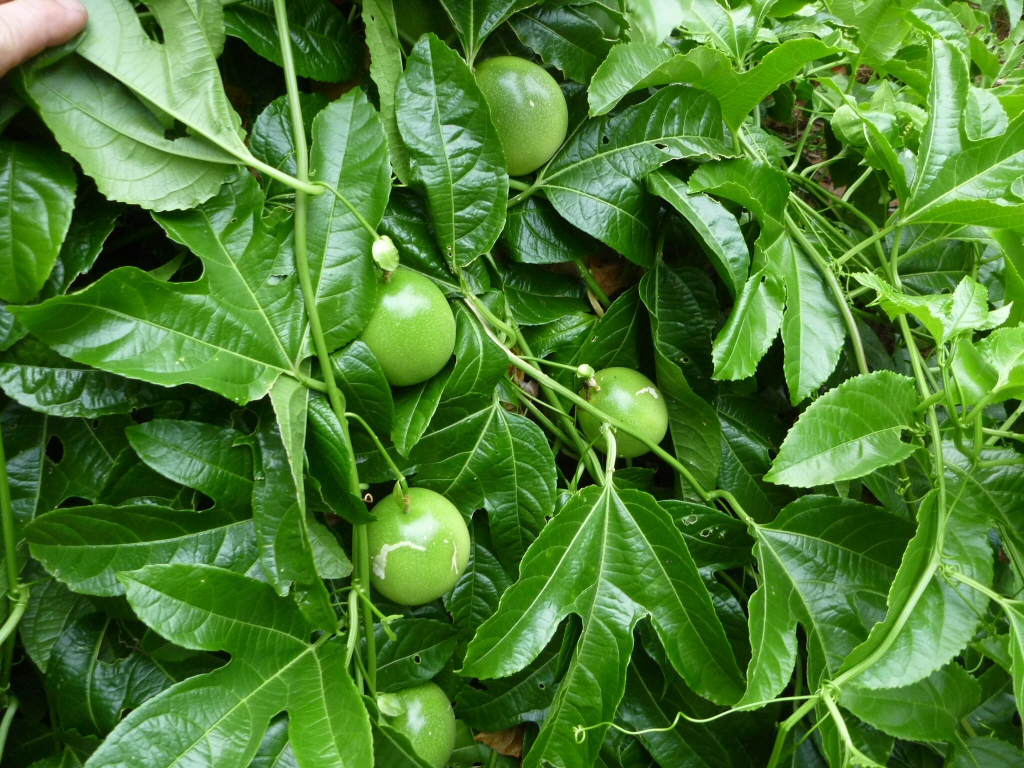How do I grow passionfruit?
If you have a bare fence or trellis, why not grow a plant that not only provides delicious fruit but also has one of the most interesting and beautiful flowers in the plant world.
Passion fruit require a sunny, frost-free position with a well drained soil and something to wrap their tendrils around such as chicken wire or wooden lattice. Growing them in a large container is a great option if your soil is on the heavy side.
It can be worth purchasing a grafted passion fruit if your soil is heavy, as the banana passionfruit rootstock used to graft onto is selected for their resistance to root rots which can sometimes kill seed grown plants. If you do get a grafted passionfruit then you need to be vigilant about taking off any growth that appears from under the graft, as this understock can be very invasive, and also sucker everywhere. Also if the top part dies off, the bottom part can take off and become a real pest, so remove the plant if the top part dies. You can see the difference in foliage, banana passionfruit leaves are much smaller and not as green and rippled looking as purple passionfruit leaves. Seed grown plants will usually perform well, so it is not necessary to use grafted passionfruit unless you have previously had problems. If you find it hard to buy seed grown plants, simply buy a fruit, and save a few of the seeds, which can be planted directly into the soil where you want them to grow.
It will take one to two years for the plant to be ready to start bearing fruit. Once they begin flowering, to get the best possible crop it is important to feed and water throughout the warmer months, when the plants flower and set fruit. A fertiliser that releases gradually throughout the year is ideal so either a couple of handfuls of a slow release product or a generous layer of well rotted animal manure can be used. Be careful not to feed with a high nitrogen fertiliser though, unless you want a huge plant, as high nitrogen will encourage lots of leaf growth at the expense of flowers and fruit. If in doubt, get a fertiliser specifically formulated for flowering and fruit. Pick the fruit when it has finished changing colour in summer and give the plant a light prune at this time also. Or a heavy prune if your plant has turned out a lot bigger than expected or wanted!
One problem that I get asked about regularly is a lack of fruit set, even when a plant may be flowering prolifically. This is most often due to a lack of pollinating insects such as bees. Here the gardener will need to become the pollinator. Have a look at a nicely opened passionfruit flower, and you will see 5 stamens that have fluffy looking pollen. Brush your finger along these and if the pollen gets transferred to your finger, you’ll have ripe pollen. Unripe pollen will stay put. Simply brush this pollen onto the 3 stigmas (the female parts). If you have done it right, you’ll soon start to see developing fruit. If you look carefully at the picture of the passionfruit flower above, the stamens are the bright green things in the centre of the flower, and the stigmas are the three purple things in the centre. Happy pollinating!


